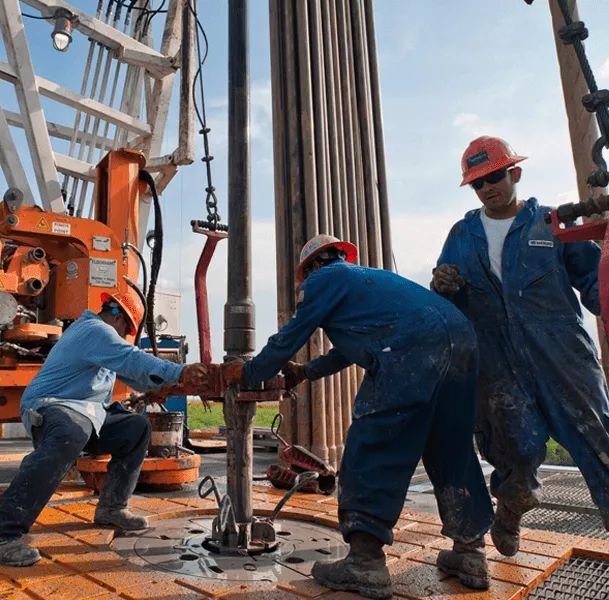Our Drilling Engineers utilize cutting-edge drilling software and modeling tools to design, optimize, and execute well construction programs that maximize efficiency, reduce risks, and ensure wellbore integrity for our clients.

How We Apply Technologies to Deliver the Best Solutions
- We use directional drilling planning tools to design well paths that avoid collisions, optimize dogleg severity, and reach targets with minimal tortuosity.
- Torque-and-drag modeling ensures drillstring designs can withstand expected loads while maintaining efficient weight transfer to the bit.
- Anti-collision scanning prevents wellbore interference in congested fields.
- BHA (Bottom Hole Assembly) modeling software helps select the most efficient configuration for vibration control and weight transfer.
- Bit performance simulators match cutter technology to formation hardness, improving ROP (Rate of Penetration) and longevity.
- Real-time drilling optimization adjusts parameters (WOB, RPM, flow rate) to maximize efficiency while avoiding dysfunctions.
- Hydraulic modeling software ensures proper hole cleaning, avoiding cuttings buildup in deviated wells.
- Equivalent Circulating Density (ECD) simulations prevent lost circulation and formation damage in narrow mud weight windows.
- Surge/swab analysis minimizes pressure spikes during tripping operations.
[Image: Hydraulic modeling simulation]
- Real-time data analytics platforms detect drilling dysfunctions (stick-slip, whirl) early, allowing corrective actions.
- Automated drilling control systems optimize parameters dynamically, reducing human error and improving consistency.
- Early kick/loss detection algorithms enhance well control responses.
| Dysfunction | Impact |
|---|---|
| Stick-Slip | Reduces ROP, damages bit |
| Whirl | Increases vibration, equipment wear |
- Efficiency Gains – Optimized drilling parameters reduce flat time and improve ROP.
- Risk Reduction – Advanced modeling prevents well control incidents and stuck pipe.
- Cost Savings – Data-driven decisions minimize NPT and unnecessary contingencies.
- Regulatory Compliance – Well designs meet industry standards (API, ISO, BSEE).
- Pore pressure & fracture gradient (PPFG) modeling prevents wellbore collapse or fracturing.
- Stuck pipe risk analysis identifies high-risk zones and recommends mitigation strategies.
- Shale stability simulations optimize mud weight and chemistry to prevent washouts.
- Monte Carlo risk simulations quantify uncertainties in well time and cost.
- Stuck pipe & fishing probability models reduce NPT (Non-Productive Time).
- Blowout preventer (BOP) reliability analysis ensures compliance with safety standards.
| Risk | Mitigation |
| Stuck Pipe | Real-time monitoring, optimized drilling parameters |
| Blowout | Reliable BOP systems, early kick detection |
- Drilling performance benchmarking compares actual vs. planned metrics to refine future wells.
- Lessons-learned databases document best practices for similar formations.
- Machine learning applications predict drilling hazards based on historical data.